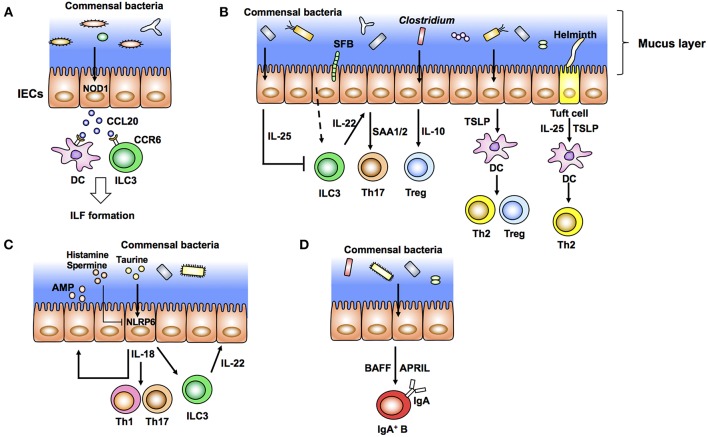Figure 1.
Intestinal epithelial cells (IECs) modulate the gut immune system in response to commensal bacteria (outside-in signals). (A) Diverse microbiota provides the ligands of NOD1 expressed in IECs. These ligands induce production of epithelial CCL20 as well as recruitment of CCR6+ dendritic cells (DCs) and group 3 innate lymphoid cells (ILC3) that initiate the development of isolated lymphoid follicles (ILFs). (B) Specific commensal bacteria, such as segmented filamentous bacteria (SFB) and Clostridium, induce differentiation of Th17 cells and Tregs, respectively. SFB induce production of IL-22 from ILC3. IL-22 elicits epithelial SAA1/2 and subsequent Th17 cell differentiation. IECs produce IL-10 in response to Clostridia and induce Treg differentiation. Epithelial IL-25 limits the production of IL-22 from ILC3. IECs condition dendritic cells (DCs) to a tolerogenic phenotype through the production of TSLP. Tuft cells recognize helminth signals and produce IL-25 and TSLP that skew Th2 immune responses. (C) Epithelial IL-18 production is mediated by activation of NLRP6 in response to taurine produced by commensal bacteria. Epithelial IL-18 induces the production of IL-22 from ILC3 and antimicrobial peptides (AMP) from epithelial cells in an autocrine manner. (D) Commensal bacteria elicit production of APRIL and BAFF by IECs and IgA class switching of B cells.

